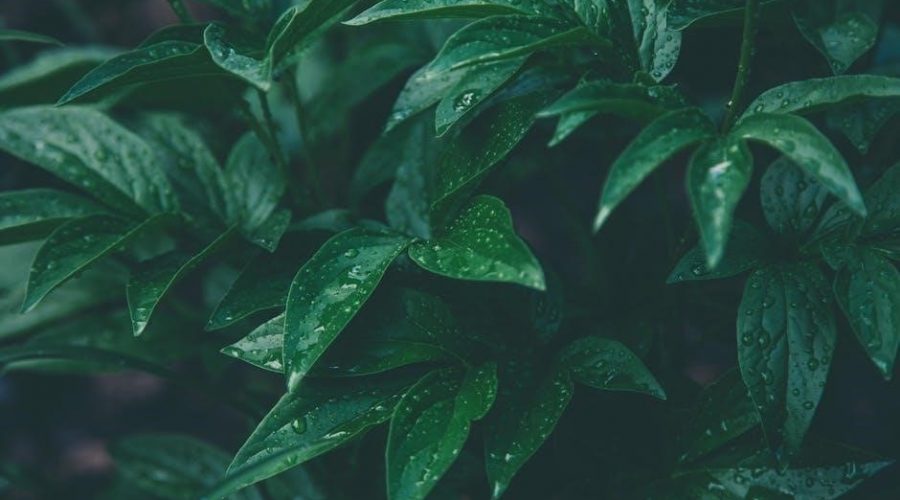A moisture meter is an essential tool for determining the optimal watering balance for your plants, ensuring they receive the right amount of moisture to thrive.
What is a Moisture Meter?
A moisture meter is a handy device designed to measure the moisture levels in soil, helping gardeners determine the optimal watering needs for their plants.
It typically consists of a probe or sensor inserted into the soil, which measures either the electrical resistance or the dielectric constant of the soil. These measurements correspond to the moisture content, providing accurate readings.
The meter is an essential tool for both indoor and outdoor gardening, as it helps avoid common issues like overwatering or underwatering. By using a moisture meter, gardeners can ensure their plants receive the right amount of hydration, promoting healthy growth and reducing water waste.
It’s a must-have for anyone looking to refine their watering practices and achieve better results in plant care.
Why Use a Moisture Meter for Plants?
Using a moisture meter for plants is essential for ensuring they receive the right amount of water, avoiding common issues like overwatering or underwatering.
It helps gardeners make informed decisions about watering schedules, preventing root rot and nutrient deficiencies. By measuring soil moisture accurately, a meter promotes healthy plant growth and reduces water waste.
Here are the key reasons to use a moisture meter:
- Ensures optimal hydration for plants.
- Prevents overwatering, which can lead to root rot.
- Helps avoid underwatering, which stresses plants.
- Optimizes watering practices for different soil types.
- Supports sustainable gardening by conserving water.
By using a moisture meter, gardeners can maintain the perfect balance of moisture, fostering thriving and resilient plants.

Benefits of Using a Moisture Meter
Using a moisture meter offers numerous benefits for plant care, ensuring optimal watering practices and promoting healthy plant growth.
It helps prevent overwatering, which can lead to root rot, and underwatering, which stresses plants. By providing accurate soil moisture readings, it enables gardeners to make informed decisions.
The meter reduces water waste and promotes sustainable gardening. It is particularly useful for plants with specific moisture requirements and for gardeners managing multiple soil types.
Regular use enhances soil health, improves plant resilience, and supports robust growth. Whether for indoor plants or outdoor gardens, a moisture meter is a versatile tool for all gardeners.
Types of Moisture Meters
Moisture meters for plants come in various types, including analog and digital models, each offering unique features to suit different gardening needs and preferences.
Analog vs. Digital Moisture Meters
Analog moisture meters use simple dials or needles to display moisture levels, offering a straightforward and cost-effective solution. They are easy to use but may lack precision. Digital moisture meters, on the other hand, provide accurate and quick readings with numerical displays. They often include additional features like memory storage and customizable thresholds, making them ideal for precise gardening. While analog meters are great for basic use, digital meters are preferred for advanced gardeners seeking detailed moisture monitoring. Both types are effective, but the choice depends on your specific needs and the level of accuracy required for your plants.
Moisture Meters with Probes vs. Sensors
Probe-based moisture meters involve inserting a physical probe into the soil to measure moisture levels, providing immediate and localized readings. They are cost-effective and suitable for spot checks. Sensor-based meters, however, use embedded sensors in the soil to continuously monitor moisture, offering real-time data and automation capabilities. Sensors are ideal for long-term monitoring and integration with smart irrigation systems. While probes are practical for manual checks, sensors provide ongoing insights, making them better for large gardens or precision watering. Both options cater to different gardening needs, ensuring accurate soil moisture management for optimal plant health.
How Moisture Meters Work
Moisture meters measure soil moisture by using probes or sensors to detect electrical resistance or dielectric properties, providing accurate readings to guide optimal watering decisions for plants.
Understanding Electrical Resistance in Soil
Moisture meters measure soil moisture by detecting electrical resistance, which changes based on water content. When soil is dry, resistance is high, and when moist, resistance decreases. Probes inserted into the soil detect these changes, allowing the meter to convert resistance into a moisture reading. This principle works because water conducts electricity better than dry soil. The meter interprets the resistance levels, providing insights into soil moisture. Accurate readings depend on proper probe insertion and understanding soil type, as different soils have varying electrical properties. This method ensures precise monitoring of moisture levels, helping gardeners water plants effectively without overwatering or underwatering.
Dielectric Sensors and Their Role
Dielectric sensors measure soil moisture by detecting changes in the soil’s electrical properties. Unlike resistance-based meters, they use a dielectric constant, which varies with water content. When the sensor is inserted into the soil, it emits a low-frequency signal. The soil’s water content alters the signal’s capacitance, which the sensor interprets to calculate moisture levels. This method is highly accurate, especially in diverse soil types. Dielectric sensors are less prone to interference from salts or minerals, making them ideal for long-term monitoring. They provide reliable data for optimal watering, ensuring plants receive the right hydration without overwatering or underwatering, thus promoting healthy growth and soil health.
Choosing the Right Moisture Meter
Selecting the ideal moisture meter involves considering your plant type, soil characteristics, and desired accuracy. Ensure the meter suits your gardening needs for precise watering control.
Moisture Meters for Different Plant Types
Different plants require varying levels of moisture, making it crucial to choose a meter suitable for your specific needs. For example, indoor plants like ferns prefer consistently moist soil, while succulents thrive in drier conditions. Outdoor plants such as vegetables may require meters that measure deeper soil layers, especially during droughts. Understanding your plants’ moisture requirements ensures accurate readings and proper hydration. By selecting a meter tailored to your plant type, you can maintain optimal watering practices and promote healthy growth.
Soil Type and Meter Selection
Soil type significantly impacts moisture retention and meter accuracy. Sandy soils drain quickly, requiring frequent watering, while clay soils retain moisture longer. Loamy soils balance water retention and drainage. When selecting a moisture meter, consider your soil type to ensure accurate readings. For sandy soils, choose a meter with deeper probes to measure moisture effectively. For clay soils, shallow probes may suffice due to slower drainage. Understanding your soil type helps optimize meter performance, leading to better watering decisions and healthier plants.
Calibrating and Maintaining Your Moisture Meter
Calibrate your moisture meter regularly for accuracy and clean the probe after use to ensure proper function and extend its lifespan.
How to Calibrate Your Moisture Meter
Calibrating your moisture meter ensures accurate readings. Start by inserting the probe into a dry soil sample and adjusting the meter to its zero point. Next, test it in a moist soil sample, setting the meter to reflect optimal moisture levels. Follow the manufacturer’s instructions for specific calibration steps. Regularly check and recalibrate the meter, especially when using it for different soil types or plants. Clean the probe after each use to prevent contamination and ensure reliable performance. Proper calibration and maintenance will help you make informed watering decisions and keep your plants thriving.
Maintenance Tips for Longevity
Regular maintenance ensures your moisture meter functions accurately and lasts longer. Clean the probe after each use to prevent soil buildup and contamination. Store the meter in a dry place to avoid moisture damage. Check and replace batteries as needed to maintain reliable performance. Avoid inserting the probe into rocky or hard soil, as this can damage the sensor. Calibrate the meter periodically according to the manufacturer’s instructions to ensure precise readings. Proper care will extend the life of your moisture meter and help you continue to monitor soil conditions effectively for healthy plant growth.

Using a Moisture Meter Effectively
Insert the probe into the soil near your plant’s root zone for accurate readings. Monitor moisture levels regularly to adjust watering schedules and prevent overwatering or underwatering.
Inserting the Probe Correctly
To ensure accurate readings, insert the moisture meter probe into the soil near the plant’s root zone, typically 4-6 inches deep. Avoid touching rocks, roots, or other obstructions, as this can skew results. For potted plants, push the probe halfway into the soil depth. In sandy soils, insert deeper to reach moisture, while in clay soils, shallower insertion may suffice due to slower drainage. Always clean the probe after use to prevent contamination and ensure consistent measurements.
For even more accuracy, take readings in multiple locations around the plant and average the results. This helps account for soil variations and provides a clearer picture of moisture levels.
Interpreting Moisture Readings
Understanding the readings from your moisture meter is key to proper watering. Most meters display moisture levels as dry, moist, or wet. If the reading shows dry, it’s time to water. If it indicates moist, hold off watering temporarily. A wet reading means the soil is saturated, and watering should be avoided to prevent root rot. Always consider your plant’s specific needs and adjust accordingly. For example, some plants prefer slightly drier soil, while others thrive in consistently moist conditions.
Regularly monitoring and interpreting these readings helps maintain optimal soil conditions, promoting healthy root growth and preventing common watering issues like overwatering or underwatering. Adjust your watering schedule based on these insights for the best results.
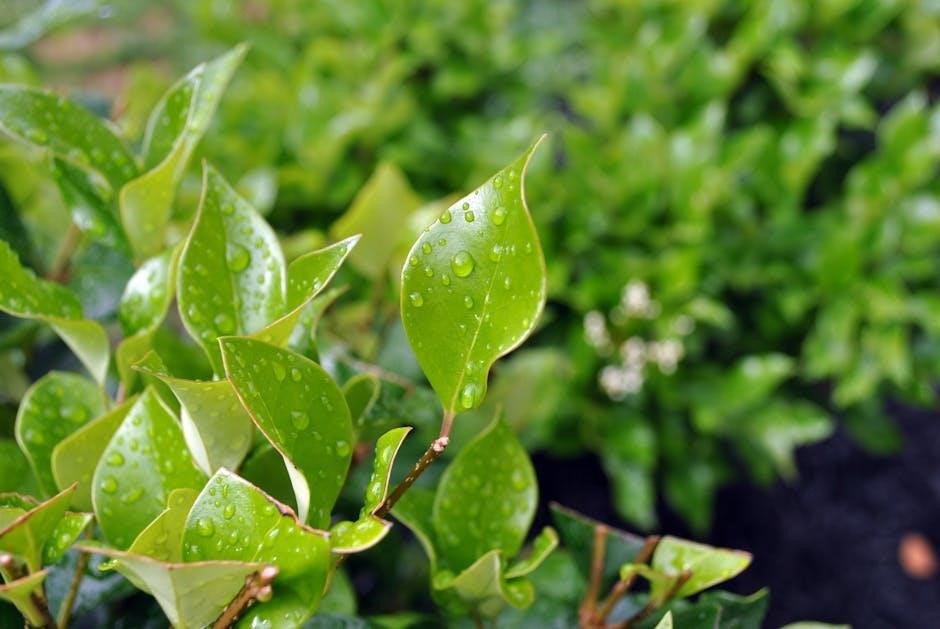
Integrating with Irrigation Systems
Pairing a moisture meter with irrigation systems automates watering based on soil conditions, ensuring plants receive precise hydration. This integration optimizes water use and enhances plant health.
Drip Irrigation and Moisture Meters
Drip irrigation systems work seamlessly with moisture meters to deliver water directly to plant roots, minimizing waste and preventing overwatering. By integrating a moisture meter, the system adjusts watering automatically based on real-time soil conditions. This ensures plants receive the exact amount of water needed, regardless of soil type. The meter measures moisture levels, and when they drop below a set threshold, the drip system activates, providing hydration precisely where and when it’s needed. This efficient combination not only conserves water but also promotes healthier plant growth and reduces maintenance. It’s an ideal solution for gardens of all sizes, ensuring optimal watering every time.
Smart Irrigation Systems with Moisture Sensors
Smart irrigation systems equipped with moisture sensors revolutionize plant care by automating watering based on real-time soil conditions. These systems use moisture meters or integrated sensors to monitor soil humidity and adjust irrigation schedules accordingly. By connecting the sensor to an irrigation controller, the system activates only when moisture levels drop below a specified threshold. This technology ensures plants receive precise hydration, eliminating overwatering and underwatering risks. Smart systems are compatible with various soil types and can be programmed to accommodate different plant needs. They offer a convenient, eco-friendly solution for gardeners, promoting healthy plant growth while conserving water and reducing manual labor. This advanced approach makes gardening more efficient and enjoyable.
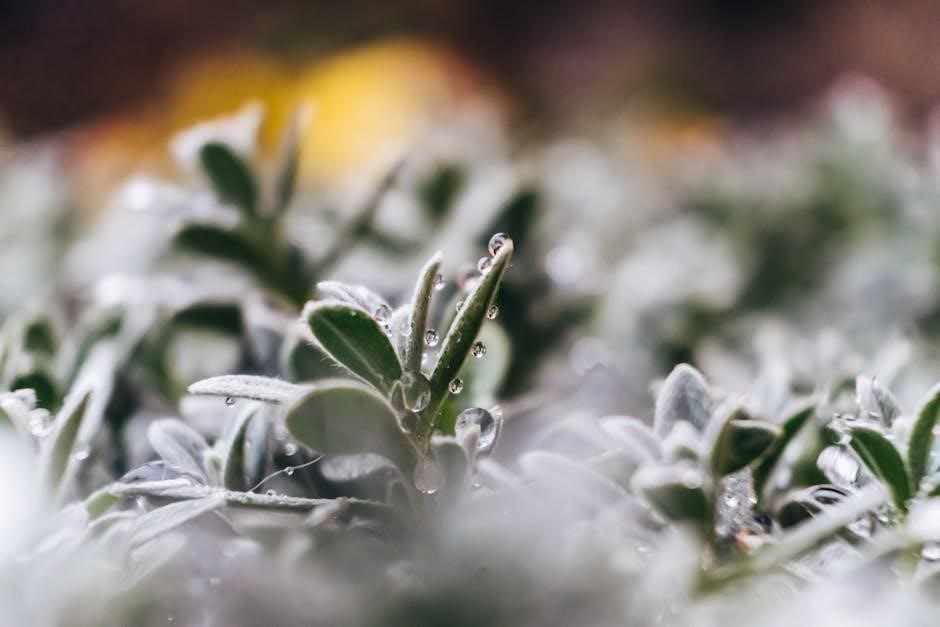
Common Mistakes to Avoid
Common mistakes include overwatering and underwatering, often caused by ignoring soil type and meter limitations. Ensure proper calibration and probe insertion for accurate readings and optimal plant health.
Overwatering and Underwatering
Overwatering and underwatering are two of the most common mistakes gardeners make, both of which can harm plant health. Overwatering leads to root rot and nutrient depletion, while underwatering causes wilting and stress. A moisture meter helps prevent these issues by providing accurate soil moisture readings, ensuring plants receive the right amount of water. By monitoring moisture levels regularly, gardeners can avoid the guesswork and maintain optimal hydration for their plants. This tool is especially useful in varying soil types, as it accounts for differences in water retention. Proper use of a moisture meter ensures plants thrive without the risks of overhydration or dehydration.
Ignoring Soil Type and Meter Limitations
Ignoring soil type and meter limitations can lead to inaccurate moisture readings and poor watering decisions. Different soils, such as sandy, clay, or loamy, retain water differently, affecting meter accuracy. For instance, sandy soil drains quickly, while clay soil holds moisture longer. Using a moisture meter without considering these factors may result in overwatering or underwatering. Additionally, every meter has limitations, such as depth range or sensor sensitivity, which must be understood for precise measurements. Failing to account for these aspects can lead to inconsistent results, stressing plants and reducing their health. Always consider soil characteristics and meter specifications for reliable readings;
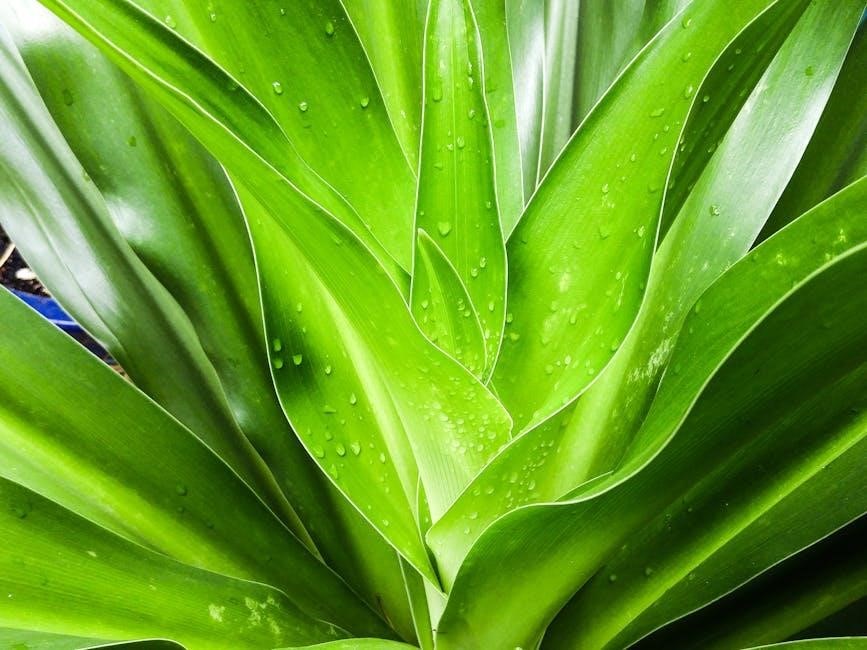
Best Practices for Moisture Meter Usage
Consistently monitor soil moisture levels for accuracy. Regularly check and maintain your meter. Automate watering schedules based on readings for optimal plant health and growth.
Regular Monitoring of Soil Moisture
Regularly monitoring soil moisture is crucial for maintaining healthy plants. By checking moisture levels frequently, you can ensure your plants receive consistent hydration without overwatering or underwatering.
- Use a moisture meter to assess soil conditions accurately.
- Take readings at the root zone for reliable data.
- Adjust watering schedules based on seasonal changes and weather patterns.

This practice helps prevent root rot and ensures optimal nutrient absorption, promoting robust plant growth and overall garden health.
Automating Watering with Meter Data
Automating watering using moisture meter data ensures your plants receive water precisely when needed. By integrating the meter with smart irrigation systems, you can set thresholds for soil moisture levels.
- The system automatically triggers watering when moisture drops below the set threshold.
- Pairing with drip irrigation ensures water is delivered directly to the root zone.
- Real-time monitoring and adjustments optimize water usage and plant health.
This approach minimizes overwatering, reduces maintenance, and promotes efficient water conservation, ensuring your garden thrives with minimal effort.
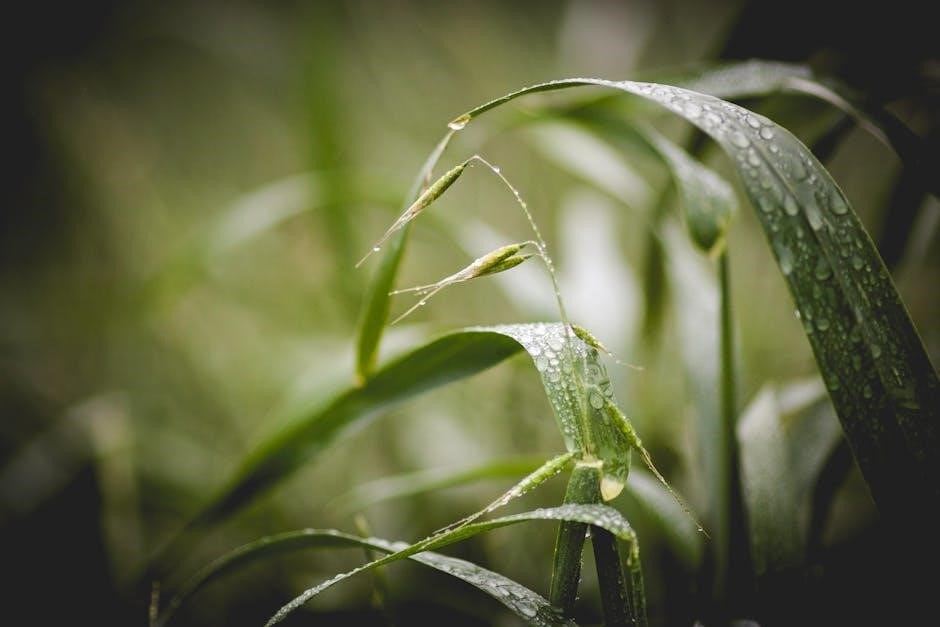
Advanced Techniques for Plant Care
Using Multiple Meters for Large Gardens
For expansive gardens, employing multiple moisture meters ensures precise monitoring across diverse soil types and plant needs, enabling tailored watering schedules and optimal plant care.
For large gardens with diverse soil types and plant species, using multiple moisture meters ensures comprehensive monitoring across different zones. This approach allows gardeners to tailor watering schedules to specific areas, preventing overwatering or underwatering. By placing meters in various sections, you can track moisture levels accurately, especially in areas with varying drainage or sunlight exposure. This method promotes efficient water use and reduces manual checks, ensuring consistent soil moisture for optimal plant growth. Employing multiple meters is a practical solution for maintaining the health and productivity of extensive garden spaces, providing precise data to guide irrigation decisions. This strategy enhances overall garden management and plant care.
Continuous Monitoring for Optimal Growth
Continuous monitoring with a moisture meter is crucial for maintaining optimal soil conditions, ensuring plants receive consistent hydration. Regular checks help gardeners adapt to changing weather and seasonal variations, preventing stress from overwatering or drought. By tracking moisture levels over time, you can identify patterns and adjust irrigation schedules accordingly. This proactive approach fosters healthy root development and robust plant growth. For large gardens or sensitive species, continuous monitoring becomes even more vital, allowing precise adjustments that maximize water efficiency and plant health. This method ensures your garden remains thriving year-round, regardless of environmental challenges, making it a cornerstone of advanced plant care strategies.

Troubleshooting Common Issues
Addressing issues like incorrect readings or sensor damage is crucial. Recalibrate your meter, check sensor placement, and ensure proper probe insertion to resolve common problems effectively.
Incorrect Readings and Solutions
Incorrect readings from a moisture meter can stem from probe damage, improper insertion, or calibration issues. To resolve this, first inspect the probe for visible damage or corrosion and replace it if necessary. Ensure the probe is inserted at the correct depth and angle, avoiding contact with rocks or debris. Recalibrate the meter according to the manufacturer’s instructions, often by adjusting the settings in dry or moist reference conditions. Additionally, verify that the meter is compatible with your soil type, as some devices perform better in specific soil environments. Regular maintenance, such as cleaning the probe and updating firmware, can also improve accuracy and reliability. By addressing these factors, you can restore precise moisture measurements and ensure optimal plant care.
Repairing or Replacing Your Meter
Repairing or replacing your moisture meter ensures accurate readings and extends its lifespan. Start by diagnosing issues like faulty probes or damaged sensors. Clean the probe gently with water and mild soap to remove debris. If the meter still malfunctions, check for loose connections or corroded parts and tighten or replace them. For severe damage, contact the manufacturer for repair options or consider purchasing a replacement. When buying a new meter, select one compatible with your soil type and plant needs. Regular maintenance and proper storage can prevent future issues, ensuring your meter remains reliable for precise soil moisture monitoring and effective plant care.
Environmental Factors Affecting Readings
Temperature and humidity significantly influence soil moisture readings. Seasonal variations also impact moisture levels, requiring adjustments in meter usage and interpretation for accurate plant care decisions.
Temperature and Humidity Influences
Temperature and humidity significantly impact soil moisture readings. High temperatures can cause rapid soil drying, leading to lower moisture meter readings, while high humidity slows evaporation, maintaining higher moisture levels. These environmental factors can affect the accuracy of your meter, as they influence soil moisture retention and drainage. For instance, in hot and dry conditions, the soil may appear drier than it actually is, potentially leading to overwatering. Conversely, in cool, humid environments, the soil might seem wetter, risking underwatering. Understanding these influences helps you adjust your watering schedule and interpret meter readings more effectively, ensuring optimal plant care tailored to environmental conditions.
Seasonal Variations in Soil Moisture
Seasonal changes significantly affect soil moisture levels, impacting how often you should water your plants. During spring and summer, higher temperatures and increased evaporation reduce soil moisture, requiring more frequent watering. In contrast, autumn and winter bring cooler temperatures and reduced evaporation, leading to higher soil moisture retention and less need for watering. Additionally, rainfall patterns vary by season, further influencing soil moisture. Using a moisture meter helps you adapt to these changes, ensuring your plants receive the right amount of water regardless of the season. Regular monitoring with a meter allows you to adjust your watering schedule effectively, promoting healthy plant growth year-round.

Using a moisture meter ensures precise watering, promoting healthy plant growth and water efficiency. Regular monitoring and smart irrigation integration provide a sustainable gardening experience, benefiting your plants and environment.
This guide highlights the importance of using a moisture meter for precise watering, avoiding overwatering and underwatering, and ensuring optimal plant health. It explores the different types of meters, such as analog and digital, and their probes or sensors. Proper insertion, calibration, and maintenance are emphasized for accurate readings. The guide also discusses integrating meters with smart irrigation systems for automated watering. By understanding soil types and environmental factors, gardeners can fine-tune their watering routines. Regular monitoring and best practices, like automating water delivery, lead to healthier plants and water conservation. This tool is indispensable for both indoor and outdoor gardening, offering a sustainable and efficient approach to plant care.
Final Tips for Successful Plant Care
Consistently monitor soil moisture levels using your meter to ensure plants receive the right amount of water. Insert probes at root depth for accurate readings and avoid overwatering or underwatering. Pair your meter with smart irrigation systems for automated, efficient watering. Adjust schedules seasonally and maintain your meter for longevity. By following these practices, you can create a thriving environment for your plants, promoting healthy growth and minimizing water waste. Regular care and attention to soil conditions will help you master the art of plant nurturing, ensuring your garden flourishes year-round.
